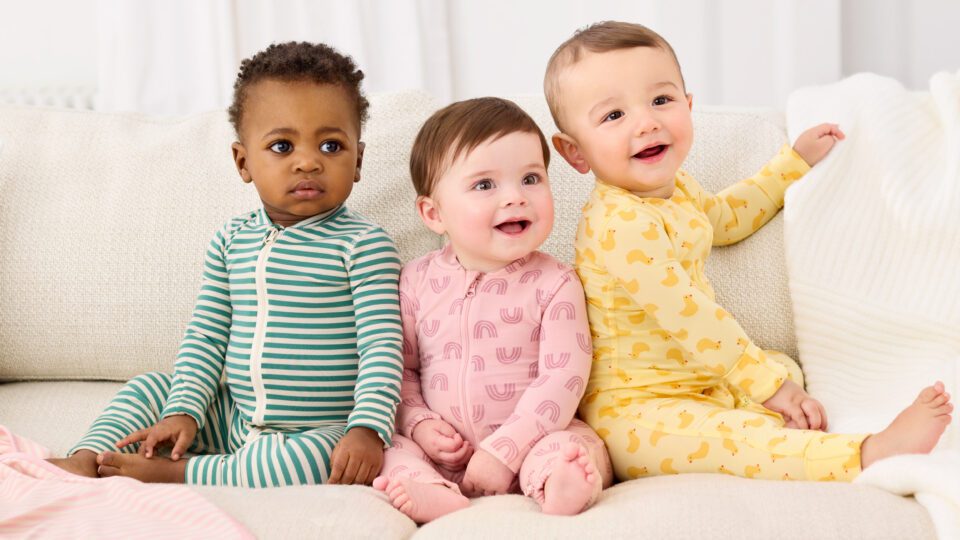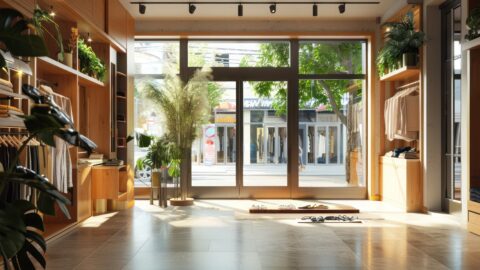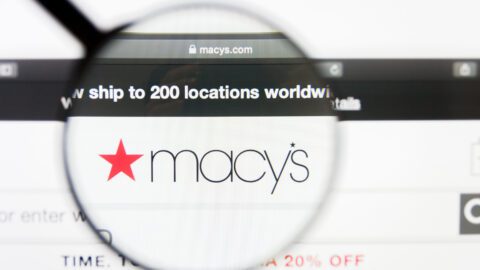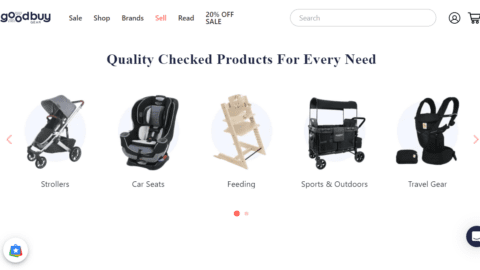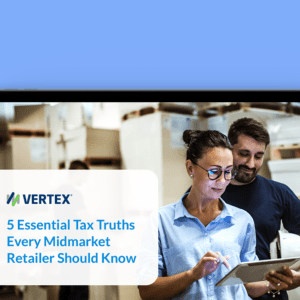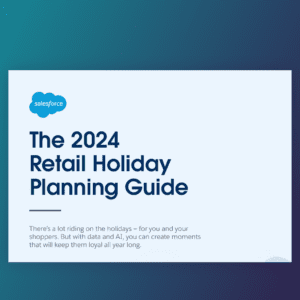Kara Carter has been in a long-term relationship with Hanna Andersson. Starting as a Merchandising Director in 2014, she has spent a decade working her way up the ranks (save for a short eight-month break in 2018) to VP of Merchandising, SVP of Merchandising and Design and, eventually, to her current role as Chief Product Officer.
While a lot can change at a brand in 10 years, Carter believes that the essence of the Hanna Andersson brand has remained very much intact since she started: to champion childhood by creating products that let kids play and have fun, but make parents feel confident about their quality, durability and safety.
Now, Hanna Andersson is reaffirming this commitment by creating a unified, innovation-driven product team.
“We saw an opportunity to really align all of our strategic priorities around product, which does include our sustainability initiatives and how we’re thinking about sourcing responsibly, including innovation with fibers,” Carter said in an interview with Retail TouchPoints. “We’re excited for the platform to align our teams so we’re all marching toward the same goals.”
In a recent interview with Retail TouchPoints, Carter shared the inside scoop into those goals, including how the growth and evolution of its “Hanna-Me-Downs” resale program will play an integral role.
Interview with Kara Carter, Chief Product Officer of Hanna Andersson

Retail TouchPoints (RTP): It seems like Hanna Andersson does a great job of not just walking the walk but also talking the talk when it comes to sustainability. How do you ensure there’s alignment between the brand’s mission and vision, as well as your guideposts from a product innovation and sustainability perspective?
Kara Carter: That is what has made our sustainability journey so clear. Even if you think about the company’s founding story, when it was the 1980s and all children’s clothing were made with synthetics, our founder Gun Denhart saw this opportunity to bring responsibly made clothing to the market for children that could actually let kids be kids. When we kind of think about our own journey at Hanna, it always ties back to childhood; we’re championing childhood, and we want kids to be able to wear products that let them play and have fun, but also give parents confidence that there’s durability, quality and safety, too. We always want to make sure that products are toxin-free and that we have the right certifications.
40 years ago, when sustainability wasn’t even a word, our founder launched on this path around quality, durability and safety. And those, I would say, have been our North Stars. Even 40 years later, when we think about innovation, or we think about what’s next for us, we’re always making sure it’s tied back to those.
RTP: What were some of your biggest sustainability milestones in 2023, and how did those successes inspire and inform your 2024 priorities?
Carter: Resale was a big thing for us in 2023 and is continuing through this year. It was such a natural no-brainer for us — I’ve wanted Hanna to be in the resale game for years because it’s just so synergistic with how our consumer was already behaving with our product. There are so many anecdotal stories about how consumers have been exposed to the brand through someone gifting them a hand-me-down.
For us to actually be able to bring a seamless, end-to-end service for our customers to be able to buy and sell their beloved Hannas on our site, and drive that durability and circularity promise home for our customers, was a big win for us. Technology was what allowed us to do that, and there are platforms out there for brands to easily implement this type of a service for their customers.
RTP: What results are you seeing from the ‘Hanna-Me-Downs’ program so far?
Advertisement
Carter: We just launched it in February 2023, so it’s exciting to have our first full year under our belt. But to me, this is such a clear case of sustainability being good for business, too. The ‘Hanna-Me-Downs’ program has outperformed our internal expectations. Customers have an option to either get a cash payment of what they’re selling [equivalent to] 70% of the total value, or they can get a gift card back to Hanna Andersson at 100% value, so we’re obviously incentivizing the customer to come back to us.
We’re seeing more than 85% of consumers choosing the gift card option, and when they do come back to us, they’re spending two to three times more than the gift card amount. It has really turned into this very circular relationship, which we love. We want more Hanna’s in the world, and we want our customers to be able to pass them on to their friends or sell them and get some value out of them, so it’s been very exciting for us to see that come to life.
Additionally, we’ve found that we’ve been able to bring in new customers through resale, because it’s such an easy way to try the brand and it’s at a lower price point, so they can really test the quality. But what’s really exciting is that we’ve also been able to [use resale to] reactivate customers that haven’t engaged with us for a year or two. Those are two very tactical customer key performance indicators that we keep an eye on with our resale program, and we’ve seen really good results so far in both areas.
RTP: What else is top-of-mind for your team right now?
Carter: We are really thinking about transparency and mapping our product. We believe the path forward to sustainability is being really transparent in our product lifecycle, so 97% of our materials can be traced to pre-fabric state. There is a lot of legislation happening, especially in Europe, but as of now, no one is requiring us to do that. We always look at it as making sure we’re ahead of the curve.
And I would say the final constant for us is fabric and fiber innovation. It’s a balance of knowing what’s ahead — making sure that we have enough knowledge and are doing research so we know where we want to pivot to over the next two, three, five or 10 years — but also making sure we’re always aligned with where the brand is today and what our strategic goals are for this year.
RTP: How are your teams structured to ensure you’re always striking that balance between what’s happening now and what’s happening next in textile innovation?
Carter: We have a dedicated responsible sourcing arm of our product team, and they are tied very closely to our fabric innovation. There’s so much synergy with how we’re thinking about responsible sourcing and the fabrics that we’re bringing to life, so we’re part of the Textile Exchange, and we use Higg Index Tools to guide us on the most sustainable fabrics. It’s definitely not something you can do on your own, especially for a mid-sized brand like Hanna. We don’t have tons of resources or a big team, so we rely on outside partners to help us with their education as well.
RTP: And what are Hanna Andersson customers saying they want — if not from a sustainability perspective but from a design and product development perspective?
Carter: It’s interesting because there are a lot of studies that say sustainability is not necessarily the motivator for purchase, but that doesn’t mean that it’s not helping. For me, the most important piece is knowing who your customers are today but also knowing who your customers are in five or 10 years, especially in the children’s market where you’re constantly getting a new customer.
We always want to make sure that we’re using our marketing to really tout our durability or quality — but in a way that’s really easy for the customer to understand that this product lasts. But there’s so much more that we do around our certifications; for example, our organic cotton is Global Organic Textile Standards (GOTS) certified. There’s a lot more that we do on the product side, so through our product pages or our sustainability page, we allow our consumers to click down to learn more. It’s important for us that we’re educating the customer and bringing them along, giving them places to learn more about what we do with our product, no matter where they are in their own personal sustainability journey
RTP: Hanna Andersson also is trying to make other stages of the product lifecycle more sustainable, is that right? What does that look like?
Carter: We’ve eliminated nearly all of our hang tags, there’s no tissue, and even the bags and cardboard our products come in are recycled. We have tried to really think about how, at every stage of the product lifecycle, we can make things more sustainable and where we can cut back. We even think about how we’re reducing air shipments and our carbon footprint.
It’s interesting because the merchant side of me obviously wants a nice customer experience, so it’s a balance. For example, we want our gifting experience to be distinct, so our gift bundles are packaged differently, but for everything else, we eliminated all extra waste. It’s all about where you can really make a difference and not just add extra things that aren’t really warranted.
RTP: What’s next for Hanna Andersson, especially as it relates to those core pillars we discussed earlier?
Carter: It’s all about driving resale and how it relates to our brand proposition and our North Star of durability. There’s definitely fiber innovation and exploration. For example, we just launched HannaSoft, our new collection made with TENCEL, which is one of the most sustainable fabrics out there. We’re also thinking about fibers beyond cotton, and how those can play into the product line, while always making sure that our promises around quality and durability are not being compromised. It takes time to make sure that you’re developing the fabric with a new fiber that you feel confident can deliver on your promises to the customer.
And then the third priority for us is the continuation of mapping and de-risking our supply chain where it makes sense, and really being strategic about where we’re producing and how transparent we are about all the different pieces that go into our product.



